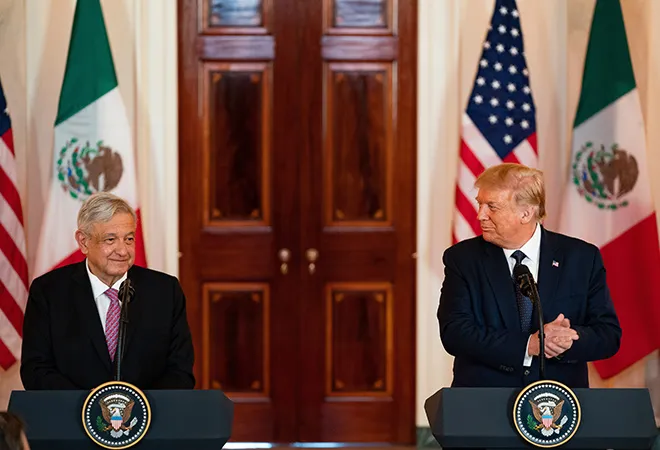
How Donald Trump has changed the world series>
The Trump administration’s policy towards the Latin American and Caribbean Countries (LAC) was underlined by issues of immigration and drug trafficking, and support for human rights, democracy and trade—not very different from policies of his predecessors. Indeed, the US has a history of partnership with the LAC countries in arresting the drug problem. The various frameworks that have been created in the past include Plan Colombia in 2000, Mérida Initiative in Mexico (2007), the Central American Regional Security Initiative (2008), and the Caribbean Basin Security Initiative (2009). Since 2018, Trump’s administration has reaffirmed its commitment to the LAC countries in promoting human rights, the rule of law, and democracy. It has sanctioned, for instance, authoritarian regimes like those in Venezuela, Cuba and Nicaragua.
At the same time, Trump’s focus on controlling immigration from the LAC has led to contentious changes in American policy towards the region. For one, the US has curtailed foreign aid to Guatemala, El Salvador and Honduras, as a penalty for failing to curb the outflow of migrants to the US. Additionally, Trump has increased taxes on remittances, and implemented controversial Asylum Cooperation Agreements and ‘Safe Third Country Agreements’ to share the burden of immigrants. Trump’s tough stance on immigration has also put the US-Mexico relationship on a tight-rope several times throughout his presidency. Fortunately for Trump, Mexico has agreed to provide immigrants with year-long humanitarian visas, allowing them to remain in Mexico.
Protectionism was a cornerstone in US policy in its backyard during Trump’s presidency. Most countries accepted these protectionist policies, albeit hesitantly, due to the US’ sheer size, geographic proximity, and trade potential. Consequently, the US’ withdrawal from the North American Free Trade Agreement (NAFTA) signed in 1994 with Mexico and Canada—and its replacement with the United States-Mexico-Canada Agreement (USMCA)—sheds light on the Trump administration’s bullish economic manoeuvring in its immediate neighbourhood. Following the signing of the USMCA, the Trump administration continued to test its relationship with Canada with the imposition of fresh tariffs on its aluminium and steel. To be sure, such strain in US-Canada relationship is not entirely new; it has various historical antecedents, amongst them, Canada’s refusal to take part in the Iraq War in 2003, as well as disputes over US duties imposed on Canadian softwood lumber exports.
These trends indicate that although Trump’s four years in office have largely not deviated from the historical elements of US policy towards the LAC, they have accentuated specific policy areas. In hindsight, it appears that an underlined pragmatism has been Trump’s major addition and change in the overall continuity of US foreign policy in the region.
The views expressed above belong to the author(s). ORF research and analyses now available on Telegram! Click here to access our curated content — blogs, longforms and interviews.




 PREV
PREV

